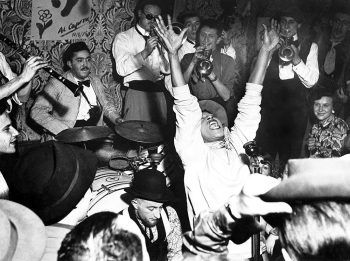Francine Prose in Lapham’s Quarterly:

In 1924 a young man named Gyula Halász left Brasov, Transylvania—his Hungarian hometown, annexed by Romania in the aftermath of World War I—and moved to Paris. There he began to call himself Brassaï and discovered his vocation as a photographer working in black and white and almost entirely at night.
In an overcoat specially designed with pockets large enough to hold twenty-four glass negatives, and with cigarettes that he used to time the long exposures—“a Gauloise for a certain light, a Boyard if it was darker”—he walked the streets of Paris, its neighborhoods and suburbs, sometimes with his friend Henry Miller but mostly by himself. He knocked on strangers’ doors and asked to take pictures from their windows; he was arrested three times. He returned to his apartment only once the sun rose or when his supply of glass plates ran out.
If, as Diane Arbus said, “a photograph is a secret about a secret,” Brassaï soon discovered which secrets he wanted to tell—confidences revealed (and withheld) about the after-hours lives of raffish Parisians who frequented the low-life cafés, the high-end brothels and cross-dressers’ clubs; about the workers who repaired and maintained the systems that enabled the city to function; about the way that the light from a street lamp illuminated a long deserted staircase descending a hill in Montmartre.
More here.
